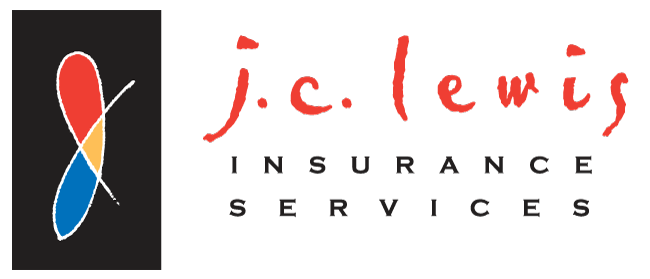Acquiring a health insurance plan in California has become far more complicated that it was prior to 2010 with the passage of the Affordable Care Act, and even more so after October 1, 2013 with the initial enrollment for Covered California.
The state’s exchange went through some difficult growing pains as some unprecedented issues were ironed out and the public at large was educated regarding qualifications, tax requirements, etc. The subsequent rising costs of premiums and health insurance coverage prompted many employers to reconsider their plan offerings for members, with many smaller employers opting out completely.
Covered California offers plans from 11 different insurance providers. These include large companies such as Anthem Blue Cross, Kaiser Permanente and several smaller companies. These are the same insurers that participated in 2018, and they offer plans at four different coverage levels that are labelled as bronze, silver, gold and platinum plans.
Companies like JC Lewis Insurance have helped numbers of clients through the process of finding and accessing suitable and affordable health insurance in California despite the hiccups, rising costs and increased bureaucratic complexity that has attended health coverage.
The Common Types of Health Insurance Plans
Depending on who you ask there can be up to seven or more types of health insurance “plans”, but there are five that are common and most familiar.
Here is an overview of each.
1. Health maintenance organizations (HMOs)
With an HMO plan, members usually have lower out-of-pocket expenses but also have fewer options for choices of primary care physicians (PCP) or hospitals than with other plans. Visits to specialists require members to obtain a referral from their PCP.
HMO coverage is generally provided for a wider range of preventative services than other plans. While members typically have a copayment for services, they may not be required to pay a deductible before their coverage starts.
There are usually no claim forms to file with an HMO plan. Typically, members have no coverage if they go outside of their network without proper authorizations from their PCP, or for certain emergency situations.
2. Preferred provider organizations (PPOs)
PPO plan members are encouraged to use their network of preferred doctors and hospitals. Unlike with HMOs, members are not usually required to choose a PCP but can choose to see any doctor or specialist within their network.
Members have an annual deductible they’ll be required to meet before coverage begins for their medical bills. In addition, there is also a copayment for certain service. With some PPO plans a co-insurance may be needed for the percentage of the total charges of medical expenses a member is responsible for.
With a PPO plan, higher out-of-pocket cost for services rendered outside of the network are typical.
3. Exclusive provider organizations (EPOs)
EPO plans are similar to HMO plans because they have a network of physicians their members are required to use except in the case of emergency. Employee members will also have a Primary Care Physician (PCP) who will provide referrals to in-network specialists. There is typically a lower premium than that of a PPO offered by the same insurer.
With an EPO, you may have limited choices for your health care providers although likely more than through an HMO. Depending on the plan provider, you may not have to get a to see a specialist.
However, there is no coverage for out-of-network providers and if you do visit a provider outside your plan’s network you will have to pay the full cost yourself. The exception is for emergency situations.
4. Point-of-service plans (POS)
While not as common as HMOs and PPOs, the POS plan combines features of both HMO and PPO plans. Similar to an HMO, POS plans may require members to choose a Primary Care Physician from their network of providers and the services provided by the PCP aren’t typically subject to the policy’s deductible.
If a member uses covered services from their PCP, they usually receive the higher level of coverage. On the other hand, services from a non-network provider may be subject to a deductible and a lower level of coverage. In addition, members may also have to pay up-front and then must submit a claim for reimbursement.
5. High-deductible health plans (HDHPs), which may be linked to health savings accounts (HSAs)
A lower-cost alternative that can allow you to pay less for your insurance is a high-deductible health plan (HDHP). With an HDHP can usually be offered with an HMO, PPO, EPO, or POS plan. An HDHP generally has a lower premium compared to other plans. However, the downside to a lower premium cost is higher out-of-pocket costs than most other plans.
In 2018, the deductible for HDHPs was at least $1,350 for an individual or $2,700 for a family, but not more than $6,650 for an individual and $13,300 for a family. Once the deductible is met preventative care is free.
Other than preventive care, you must pay all your costs up to your deductible when you go for medical care. But, like other plans, once you reach the maximum out-of-pocket amount, the plan then pays 100 percent of your care.
You can use a health savings account (HSA) to help pay for your out-of-pocket costs. Money put into an HSA is not taxed and remains tax-free when used for eligible medical expenses. You must be enrolled in a HDHP in order to have an HSA.
Unused funds in an HSA account roll over each year and accrue interest, tax-free. While funds may be used for other life events, this may incur penalties and interest to be paid. HSAs can be attached to group health insurance, but they’re owned by the member.
The Role of Preventative Care in California Health Plans
Preventative care isn’t just a buzzword—it’s the backbone of a healthy lifestyle and a smart way to cut long-term healthcare costs. With California health insurance plans, many preventative services like vaccines, screenings, and annual checkups are covered at no additional cost. Why does this matter? Catching a health issue early, like high cholesterol or prediabetes, can save you from costly treatments down the road.
For example, studies show that every $1 spent on preventative services can save up to $6 in future healthcare costs. It’s like maintaining your car: regular oil changes are cheaper than replacing the engine. Investing in preventative care is one of the easiest ways to make the most of your health plan while protecting your wallet.
How California’s Geography Impacts Plan Options
Did you know where you live in California affects your health plan options? Urban areas like Los Angeles or San Francisco offer broader networks with more HMO, PPO, and EPO choices. Meanwhile, rural regions might have fewer providers, making PPOs or telehealth-friendly plans a better fit.
For instance, a resident in Fresno might rely heavily on telehealth services to bridge gaps in specialist availability. This geographic variation means you need to evaluate plans not just based on cost but also accessibility. After all, what’s the point of a plan if you can’t find in-network doctors nearby?
Understanding Health Insurance Subsidies in California
California’s state exchange, Covered California, offers subsidies that make health insurance more affordable for many residents. These subsidies are based on income and household size, making them a game-changer for families and individuals alike.
For instance, someone earning up to 400% of the federal poverty level may qualify for significant savings on premiums. In 2023, this threshold meant a family of four earning under $120,000 could receive help. These savings can reduce monthly premiums by hundreds of dollars, giving you access to better coverage without breaking the bank.
If you’re unsure about subsidies, tools on the Covered California website can calculate your potential savings in minutes. It’s worth exploring—you might be leaving money on the table without realizing it.



